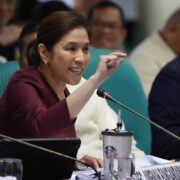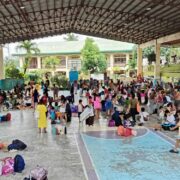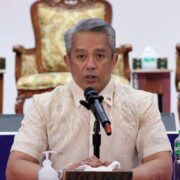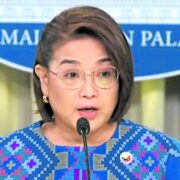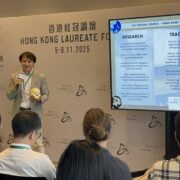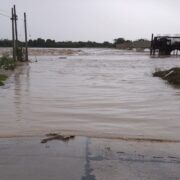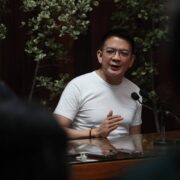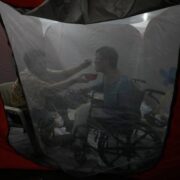Tethered bulls: On sub-par Q3 GDP growth

The economy’s animal spirits are down. Gross domestic product (GDP) grew by 4 percent in the third quarter of 2025, the lowest quarterly growth since 2011, excluding pandemic years. The slowdown came not from lack of funds or demand, but from hesitation.
Services expanded 5.5 percent, agriculture 2.8 percent, industry only 0.7 percent. Within construction’s 0.5 percent decline, government construction plummeted 26.2 percent while private construction surged 14.4 percent. Gross capital formation fell 2.8 percent after growing 12.8 percent a year earlier. The government kept paying salaries but stopped building.
On top of this general air of paranoia, around P100 billion in “for-later-release” (FLR) funds sits idle.
Everything slowed after the flood control investigations began. Not just the Department of Public Works and Highways (DPWH), but every agency that approves, certifies or releases funds.
The paranoia about who’s next on the chopping block spreads through the entire system.
The mechanics of paralysis
In a low-trust system, almost no one operates entirely by the book. Even the most virtuous businesses will admit privately that almost everyone has bent the rigidities of the system, not necessarily corruptly, but to get things done fast. In the long run, it would benefit everyone if those adjustments were unnecessary.
But in their absence, simpler systems and safe harbors must be in place.
When investigations started, those adjustments became dangerous. What was tolerated as practical judgment could suddenly be treated as wrongdoing. Officials stopped signing. The entire system entered suspended animation. Manufacturing grew only 1.2 percent despite semiconductor exports surging 23.3 percent. Domestic capacity was constrained not by demand but by operational paralysis.
Implementing agencies must implement
Accountability is good. That’s why we have the Independent Commission for Infrastructure, Department of Justice, Ombudsman, Commission on Audit (COA), Senate blue ribbon and House committees to investigate while implementing agencies continue their work.
The DPWH should build roads. The Department of Transportation (DOTr) should deliver transport projects. The Department of Education should construct classrooms. When these agencies become paralyzed by fear, they stop doing what they exist to do. Implementing agencies should cooperate fully: turn over evidence, provide documents, answer questions, then return to work.
When they stop all work out of caution, the public pays twice: once for corruption, again for paralysis.
Ironically, the corrupt are often the only ones willing to move. They have protection and connections. The ordinary bureaucrat, aware that a single COA observation can derail a career, chooses caution.
Two paths forward
- Path one: Establish anchors
The government must define which projects may proceed, which are under review, and which are suspended. Timelines must be fixed and public. FLR projects should not be held as a single blocked item.
A safe harbor policy will provide a sense of assurance for officials who just want to do their jobs. By making clear what conditions are required so that a project is not considered suspect, things can move. Cases with credible irregularities should be suspended specifically, not systemically.
Codification is critical. What constitutes acceptable specification adjustments, reasonable timeline extensions and sufficient documentation must be explicit, public and available.
- Path two: Compensate through aid
If we insist on freezing infrastructure, we must compensate through aid. The series of natural disasters provides clear need.
When people see billions for flood control while communities remain flooded, they demand accountability. But if pursuing accountability freezes infrastructure, we must keep money flowing another way. Disaster aid bypasses the paralyzed bureaucracy through different channels and emergency procedures. The P100 billion sitting idle could be redirected to disaster response.
This isn’t ideal. Aid is temporary; infrastructure is permanent. Aid treats symptoms; infrastructure prevents them. But ensuring both accountability and economic stability may require this temporary adjustment.
The Dizon challenge
Secretary Vince Dizon did wonders at the DOTr. One imagines his frustration at the DPWH, where everyone operates under suspicion, hence the courtesy resignations. At the DOTr, he could identify clean operators and empower them. At the DPWH, the contamination may appear universal.
He must restore the principle that implementing agencies implement while investigative agencies investigate. But unlike at the DOTr, where he could appoint the best people, at the DPWH, he must first break the paralysis of universal suspicion.
The best way to do this is by making rules clearer, so that the clean can proceed with the rules on their side. Instead, for example, of treating FLR projects as entirely suspect, rules can be made clear so that their release is conditional on readiness to implement and accountability of implementation.
Private sector data are not bearish. Exports grew 7 percent. The fundamentals remain sound. The constraint is entirely public sector paralysis. This is tethered bulls.
The cost of inaction
The gap between the third quarter of 2024’s 12.8-percent investment growth and the third quarter of 2025’s negative 2.8 percent represents lost development momentum. The human cost is starker: the difference between consensus 5.4-percent growth and actual 4 percent means 200,000 to 250,000 Filipinos remain in poverty who otherwise would have escaped it.
Once the rules of movement are restored, growth will return. The bulls are tethered not by economic constraints but institutional paranoia. We have investigative agencies to investigate. We need implementing agencies to implement. If immediate accountability takes priority, we must ensure aid flows to prevent hardship. Paralysis quickly becomes metastasis when unchecked.


